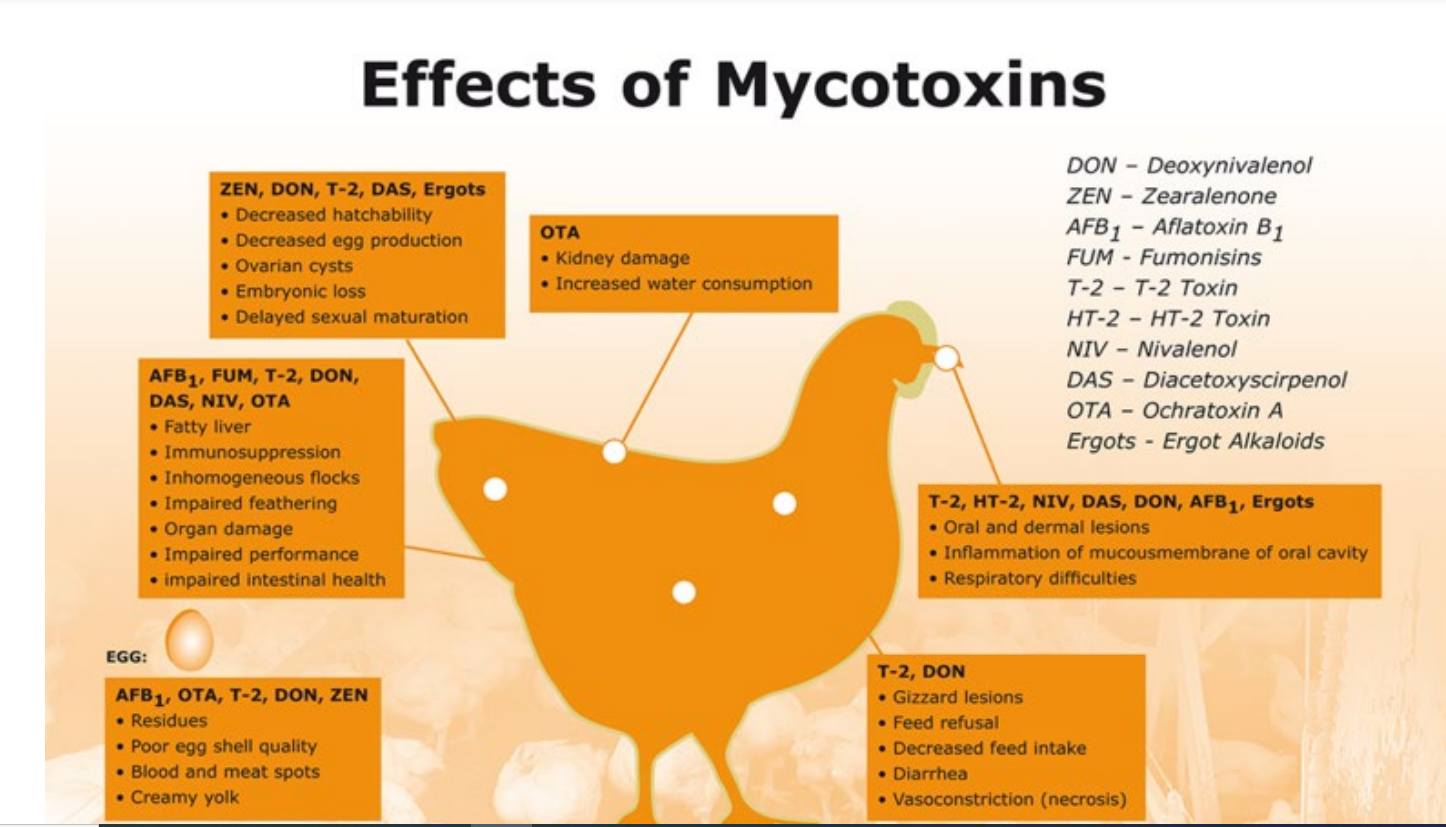Prevalence of Mycotoxins and Their Consequences on Human Health
by Admin
Posted on 08-02-2025 01:56 PM

1department of mycology and microbiology, tea research association, north bengal regional r & d center, nagrakata, india
2horticulture crop processing division, icar-central institute of post-harvest engineering and technology, abohar, india
3department of plant pathology, ccs haryana agricultural university, hisar, india
4national institute for agricultural and veterinary research (iniav), i. P. , rua dos lagidos, lugar da madalena, vila do conde, portugal
5center for study in animal science (ceca), iceta, university of oporto, oporto, portugal
6department of botany, banaras hindu university, varanasi, india
mycotoxins are toxic secondary metabolites produced by fungi when they colonies the foodstuffs. These are potent toxins having severe health consequences in people, being mutagenic, teratogenic, and carcinogenic.

Understanding Mycotoxins: Types, Toxicity, and Health Effects
Mycotoxins are toxic substances produced by certain types of fungi, commonly known as molds. These molds can grow on various organic materials, including crops, food products, and building materials. Mycotoxins are naturally occurring and can contaminate food and feed, posing health risks to humans and animals. Here are some key points about mycotoxins:
1.
 Fungal origin: mycotoxins are produced by fungi, particularly molds. Molds belong to the fungal kingdom and thrive in environments with suitable temperature, moisture, and nutrient conditions. 2. Toxicity: mycotoxins are highly toxic compounds that can have detrimental effects on human and animal health. They can cause a range of adverse health effects, including acute and chronic illnesses, depending on the type and concentration of mycotoxin, duration of exposure, and individual susceptibility.
Fungal origin: mycotoxins are produced by fungi, particularly molds. Molds belong to the fungal kingdom and thrive in environments with suitable temperature, moisture, and nutrient conditions. 2. Toxicity: mycotoxins are highly toxic compounds that can have detrimental effects on human and animal health. They can cause a range of adverse health effects, including acute and chronic illnesses, depending on the type and concentration of mycotoxin, duration of exposure, and individual susceptibility.
Acute and chronic toxicity: mycotoxins can cause both acute and chronic toxicity in humans and animals. Acute toxicity can lead to severe symptoms, such as vomiting, diarrhea, liver and kidney damage, and even death. Chronic exposure to low levels of mycotoxins can also have adverse health effects, such as immune suppression, growth retardation, and developmental delays. Carcinogenicity and genotoxicity: some mycotoxins, such as aflatoxins and ochratoxins, are known to be carcinogenic and genotoxic, meaning they can damage dna and increase the risk of cancer. Long-term exposure to these mycotoxins through contaminated food and feed can increase the risk of developing liver, kidney, and other types of cancer.
2. Mycotoxins and Mycotoxicosis
Mycotoxins are toxic substances produced by certain fungi. These compounds are considered secondary metabolites, meaning they are not essential for fungal growth but are produced in response to stress or competition. Thousands of mycotoxins have been identified, and when consumed by animals, they can cause a condition called mycotoxicosis. Symptoms vary based on the specific toxin and the affected animal. Mycotoxins can form both in the field and during storage. Environmental conditions and plant damage contribute to their presence. Additionally, multiple mycotoxins can interact negatively, compounding their harmful effects on animal health and performance.
Most consumers are unaware of the exposure to toxic molds infested in their homes, office or schools. But most of the time, these microorganisms are difficult to detect because their development is not visible macroscopically and their detection requires a specific mycological analysis. Unfortunately, some types of mold can cause damage to humans and animals, and their toxicity is not limited to their multiplication, indeed they are also toxic indirectly through the mycotoxins they produce. Unfortunately, often underestimated by home owners, the harm caused by these mycotoxins to the human body is diverse and can range from acute intoxication to chronic fatigue.
Various studies have examined the links between the process of carcinogenesis and naturally occurring oestrogen disruptors [ 4 , 56 , 59 , 69 , 70 , 71 , 72 , 73 , 74 , 75 , 76 , 77 , 78 , 79 , 80 ]. The link between exposure to xeno-oestrogens in early development and the occurrence of chronic diseases, such as cancer in later life, also appears to be important [ 70 , 71 ]. It is likely that zearalenone, as one of the representatives of mycotoxins, through its effects on gonadal and pituitary function can disrupt the endocrine system in humans.